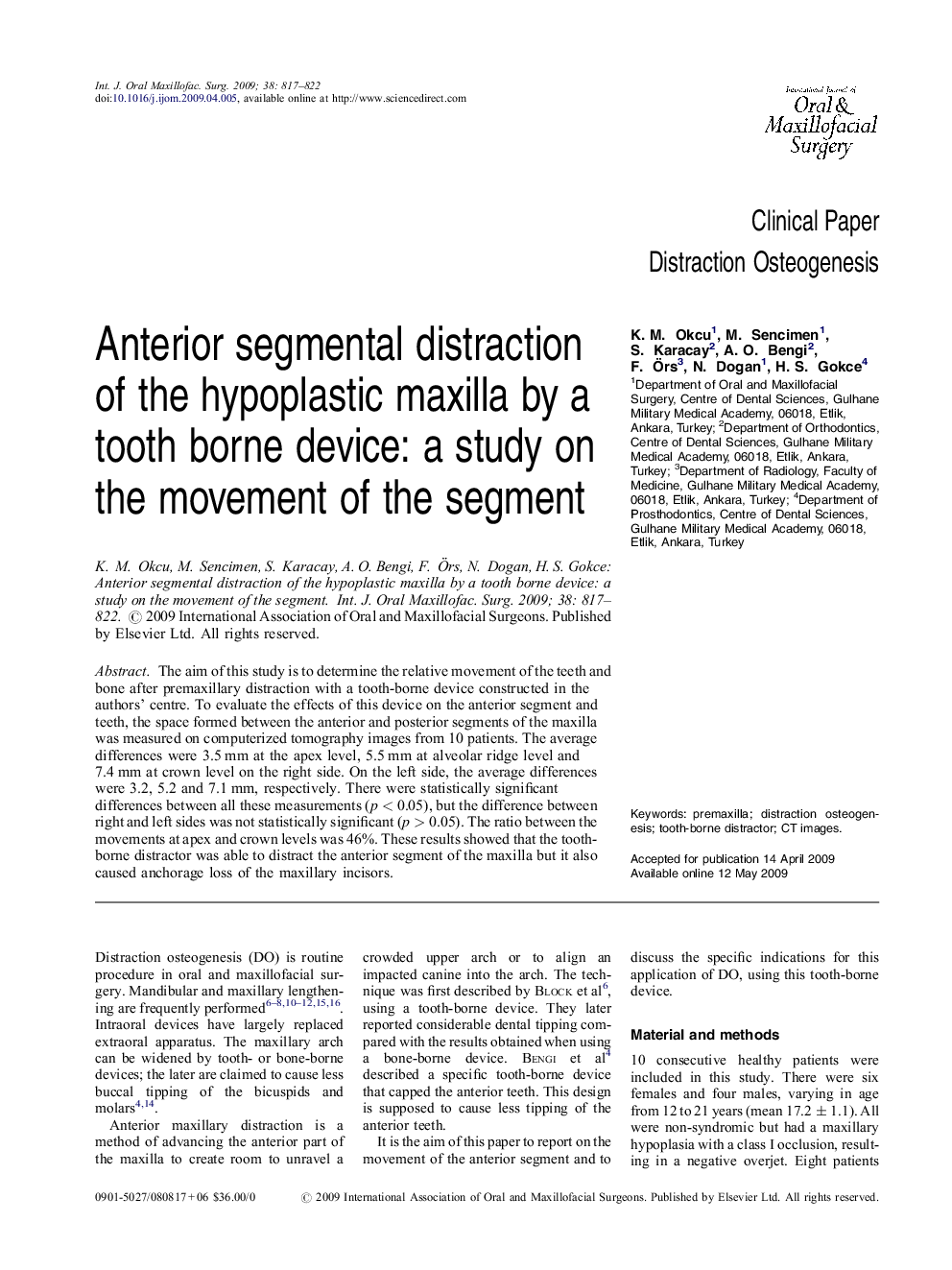| Article ID | Journal | Published Year | Pages | File Type |
|---|---|---|---|---|
| 3133888 | International Journal of Oral and Maxillofacial Surgery | 2009 | 6 Pages |
The aim of this study is to determine the relative movement of the teeth and bone after premaxillary distraction with a tooth-borne device constructed in the authors’ centre. To evaluate the effects of this device on the anterior segment and teeth, the space formed between the anterior and posterior segments of the maxilla was measured on computerized tomography images from 10 patients. The average differences were 3.5 mm at the apex level, 5.5 mm at alveolar ridge level and 7.4 mm at crown level on the right side. On the left side, the average differences were 3.2, 5.2 and 7.1 mm, respectively. There were statistically significant differences between all these measurements (p < 0.05), but the difference between right and left sides was not statistically significant (p > 0.05). The ratio between the movements at apex and crown levels was 46%. These results showed that the tooth-borne distractor was able to distract the anterior segment of the maxilla but it also caused anchorage loss of the maxillary incisors.
